-
 Bitcoin
Bitcoin $76,479.4701
-3.52% -
 Ethereum
Ethereum $1,469.1142
-5.46% -
 Tether USDt
Tether USDt $0.9993
-0.03% -
 XRP
XRP $1.7902
-4.83% -
 BNB
BNB $551.0674
-0.78% -
 USDC
USDC $1.0003
0.02% -
 Solana
Solana $105.4201
-1.56% -
 TRON
TRON $0.2301
0.50% -
 Dogecoin
Dogecoin $0.1423
-4.38% -
 Cardano
Cardano $0.5589
-4.51% -
 UNUS SED LEO
UNUS SED LEO $9.0173
0.56% -
 Toncoin
Toncoin $3.0027
-2.56% -
 Chainlink
Chainlink $10.9146
-4.73% -
 Stellar
Stellar $0.2207
-4.45% -
 Avalanche
Avalanche $16.1527
-4.24% -
 Shiba Inu
Shiba Inu $0.0...01066
-6.81% -
 Sui
Sui $1.9318
-3.99% -
 Hedera
Hedera $0.1462
-4.08% -
 MANTRA
MANTRA $6.2098
-1.18% -
 Dai
Dai $1.0001
0.01% -
 Bitcoin Cash
Bitcoin Cash $268.3547
-2.84% -
 Polkadot
Polkadot $3.3678
-6.32% -
 Litecoin
Litecoin $69.1437
-2.09% -
 Ethena USDe
Ethena USDe $0.9986
-0.03% -
 Bitget Token
Bitget Token $3.9888
-4.59% -
 Hyperliquid
Hyperliquid $11.6557
0.72% -
 Pi
Pi $0.5672
-1.97% -
 Monero
Monero $196.0247
-4.01% -
 OKB
OKB $51.1597
0.14% -
 Uniswap
Uniswap $4.7818
-6.32%
How does NFT Wrapping use NFTs across chains?
NFT wrapping creates a wNFT on a new blockchain, mirroring the original NFT's metadata and ownership, enabling cross-chain functionality without moving the original asset; however, the security of the chosen wrapping service is paramount.
Mar 02, 2025 at 09:48 pm
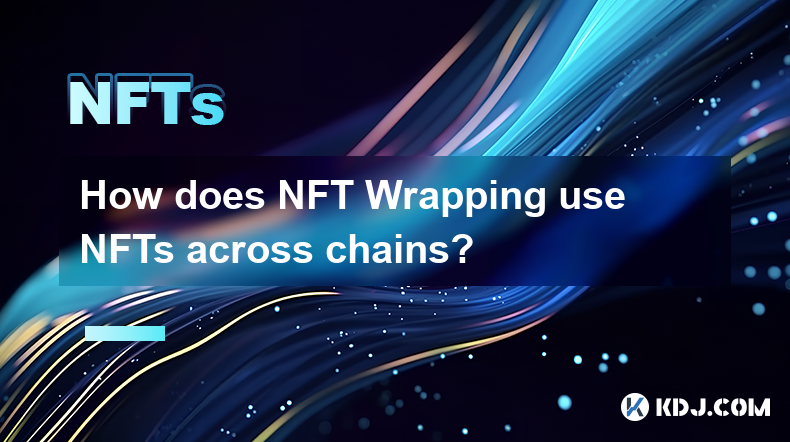
Key Points:
- NFT wrapping allows NFTs to move between different blockchains without physically transferring the underlying asset.
- The process involves creating a wrapped NFT (wNFT) on a new blockchain, representing the original NFT.
- This wrapped NFT mirrors the original's metadata and ownership, enabling cross-chain functionality.
- Security and trust in the wrapping service are paramount, as they hold the original NFT.
- Several platforms offer wrapping services, each with its own fees and security mechanisms.
How Does NFT Wrapping Use NFTs Across Chains?
Non-Fungible Tokens (NFTs) are revolutionizing digital ownership, but their existence is often confined to a single blockchain. This limitation restricts their usability and liquidity. NFT wrapping provides a solution by enabling NFTs to seamlessly transition between different blockchain networks, unlocking a world of new possibilities. It achieves this without actually moving the original NFT, instead creating a representation on a different chain.
The core concept behind NFT wrapping is the creation of a "wrapped NFT" (wNFT). This wNFT acts as a tokenized representation of the original NFT on a target blockchain. Think of it like a digital certificate of authenticity, mirroring the ownership and metadata of the original NFT. The crucial difference is that the wNFT exists and trades independently on its new blockchain.
The process typically involves a centralized or decentralized service. These services act as custodians, holding the original NFT in a secure manner while issuing the wNFT on the desired blockchain. The service must be trustworthy; users are essentially entrusting them with their valuable NFT.
Let's examine the mechanics of NFT wrapping. First, a user initiates a wrap transaction, sending their original NFT to the wrapping service. The service then verifies the NFT's authenticity and ownership. Following verification, a corresponding wNFT is minted on the target blockchain. This wNFT is then transferred to the user's wallet on that blockchain.
Security is paramount in NFT wrapping. The security of the wrapping service directly impacts the safety of the original NFT. Users should carefully vet any service before entrusting their assets. Factors to consider include the service's reputation, security audits, and the measures taken to protect against hacks or exploits.
Several platforms offer NFT wrapping services. Each platform has its own fees, associated risks, and security protocols. Some platforms may offer bridging solutions integrated with their services, simplifying the cross-chain transfer process. Users should compare different platforms before choosing one. Understanding the fees associated with wrapping and unwrapping is crucial for cost-effective usage.
The unwrapping process reverses the wrapping procedure. The user sends the wNFT back to the wrapping service, which then releases the original NFT to the user's wallet on the original blockchain. This process again involves fees and requires verification. The entire process relies on the integrity and functionality of the chosen wrapping platform.
Different blockchains have different capabilities and costs. Wrapping allows NFTs to leverage these varied functionalities. For instance, an NFT might be wrapped from Ethereum to a layer-2 solution like Polygon to reduce gas fees, or wrapped to a blockchain with better scalability for in-game assets. This flexibility is a key advantage of NFT wrapping.
Beyond individual users, NFT wrapping benefits developers and marketplaces. It allows for the creation of cross-chain applications and marketplaces, enabling NFTs to be traded and used across different platforms without the need for complex and costly native blockchain transfers.
Common Questions:
Q: Is NFT wrapping safe?
A: The safety of NFT wrapping depends entirely on the security of the wrapping service. Always research the platform thoroughly, checking for security audits and reviews before using their services. Risks include the platform being compromised or the platform becoming insolvent.
Q: What are the fees involved in NFT wrapping?
A: Fees vary across platforms and depend on several factors, including the blockchain used and the complexity of the transaction. Generally, fees are incurred during both the wrapping and unwrapping processes. These fees often cover gas costs and the service provider's fees.
Q: What are the benefits of NFT wrapping?
A: NFT wrapping allows for increased liquidity, accessibility, and usability of NFTs across multiple blockchains. It opens doors for cross-chain applications and marketplaces, enabling NFTs to participate in different ecosystems. This also reduces the limitations imposed by individual blockchain capabilities.
Q: Can all NFTs be wrapped?
A: Not all NFTs can be wrapped. The compatibility depends on the specific NFT and the chosen wrapping service. Some NFTs may have limitations based on their smart contract or the blockchain they originate from. Always check the compatibility before attempting to wrap an NFT.
Q: What happens if the wrapping service fails?
A: If the wrapping service fails, the security of your original NFT is compromised. This highlights the importance of choosing a reputable and secure wrapping service. The consequences could range from loss of the NFT to delays in accessing it.
Q: How does NFT wrapping compare to bridging?
A: While both enable cross-chain functionality, NFT wrapping creates a representation of the NFT on another chain, while bridging typically involves moving the NFT itself. Wrapping is less complex but relies on the security of a third-party service. Bridging is more direct but can be more technically challenging and expensive.
Disclaimer:info@kdj.com
The information provided is not trading advice. kdj.com does not assume any responsibility for any investments made based on the information provided in this article. Cryptocurrencies are highly volatile and it is highly recommended that you invest with caution after thorough research!
If you believe that the content used on this website infringes your copyright, please contact us immediately (info@kdj.com) and we will delete it promptly.
- "Cardano (ADA) Price Could Dip Below $0.60, Following Previous Market Cycle"
- 2025-04-09 05:10:12
- BONK, the well-known meme coin, has risen over 35% in the last week, attracting meme coin investors in the market. So, what caused this rally?
- 2025-04-09 05:10:12
- Bitcoin (BTC) Investors May Not Exactly Feel It, but BTC Has Been a Relatively Good Bet
- 2025-04-09 05:05:12
- Donald's Bitcoin (DONBTC) Could Turn Early Investors into Multi-Millionaires, Like Shiba Inu (SHIB) and Dogecoin (DOGE) Did
- 2025-04-09 05:05:12
- 6 Upcoming Kraken Listings That Could Be the Next Big Thing in Crypto
- 2025-04-09 05:00:13
- COTI Unveils New Privacy-Focused Blockchain to Reshape Web3 Transactions
- 2025-04-09 05:00:13
Related knowledge
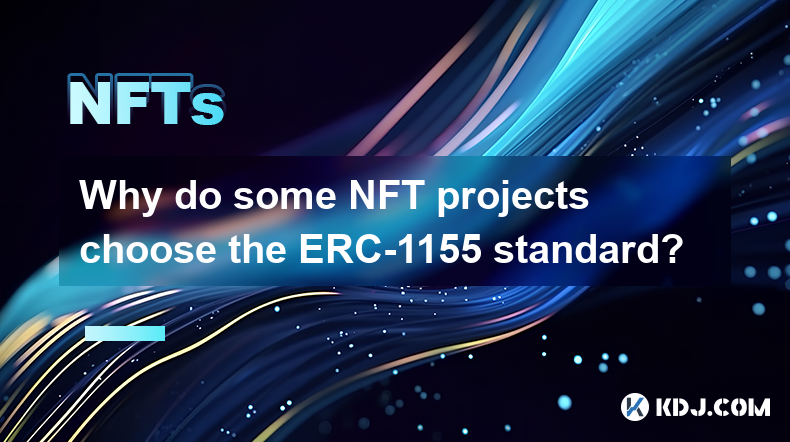
Why do some NFT projects choose the ERC-1155 standard?
Apr 08,2025 at 11:49am
The world of Non-Fungible Tokens (NFTs) has seen a significant rise in popularity and innovation, leading to the development of various token standards. Among these, the ERC-1155 standard has emerged as a versatile and efficient choice for many NFT projects. This article delves into the reasons why some NFT projects opt for the ERC-1155 standard, explor...
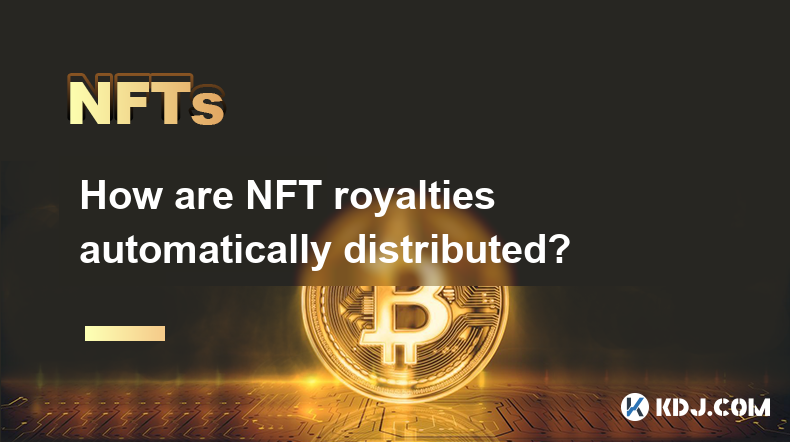
How are NFT royalties automatically distributed?
Apr 08,2025 at 08:14pm
NFTs, or Non-Fungible Tokens, have revolutionized the digital art and collectibles market by providing a way to prove ownership and authenticity of digital assets. One of the most intriguing features of NFTs is the ability to automatically distribute royalties to creators whenever their work is resold. This article will delve into the mechanisms behind ...
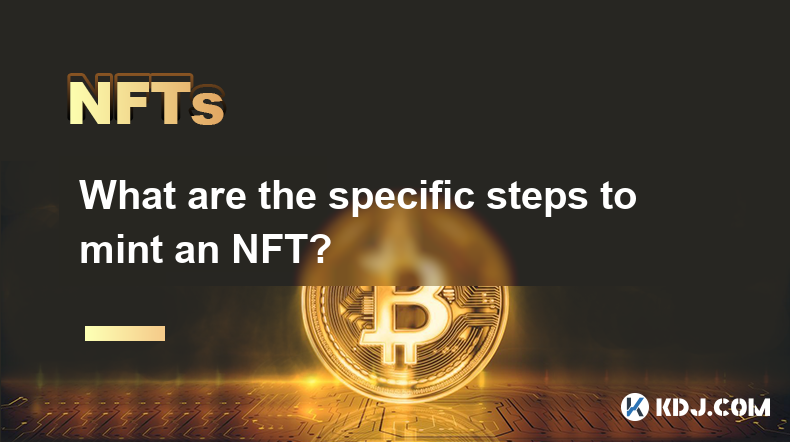
What are the specific steps to mint an NFT?
Apr 08,2025 at 05:22pm
Introduction to NFT MintingMinting an NFT, or Non-Fungible Token, involves creating a unique digital asset on a blockchain. This process allows artists, creators, and collectors to tokenize their work, ensuring its authenticity and ownership. Understanding the steps to mint an NFT is crucial for anyone looking to enter the world of digital collectibles....
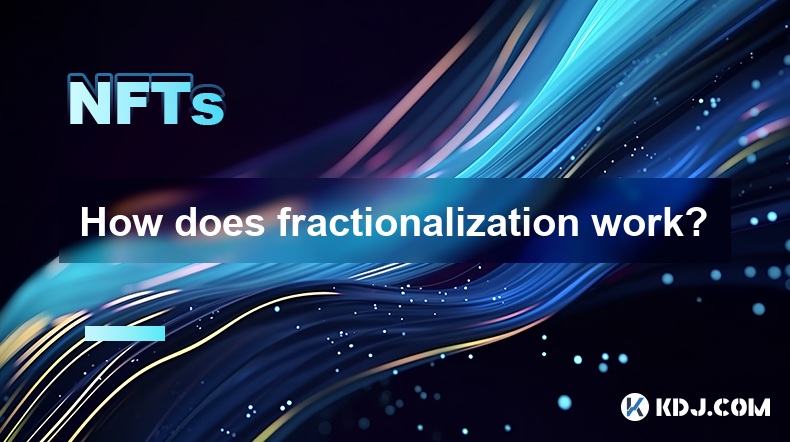
How does fractionalization work?
Apr 08,2025 at 07:42pm
How does fractionalization work? Fractionalization in the context of cryptocurrencies and blockchain technology refers to the process of dividing a single asset into smaller, more manageable pieces. This concept has revolutionized the way investors and users interact with high-value assets, making them more accessible and liquid. In this article, we wil...
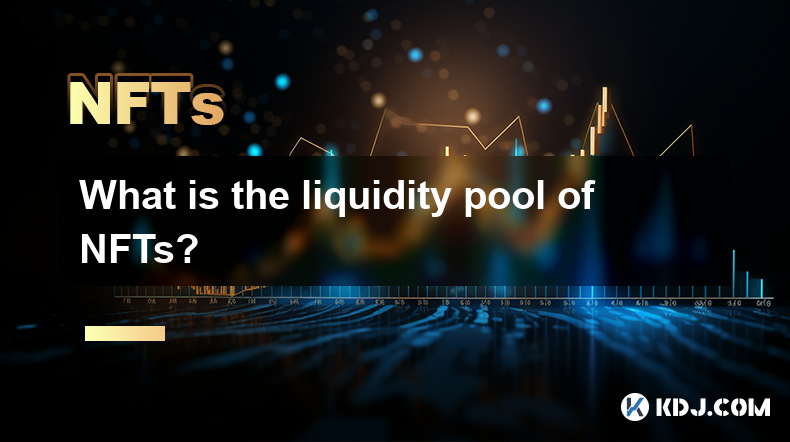
What is the liquidity pool of NFTs?
Apr 08,2025 at 05:35pm
The concept of liquidity pools has become increasingly popular within the cryptocurrency and decentralized finance (DeFi) ecosystems. While traditionally associated with token swaps, the idea has extended to the realm of Non-Fungible Tokens (NFTs). Liquidity pools for NFTs are mechanisms that facilitate the trading and exchange of these unique digital a...

What are the common ways to participate in the NFT whitelist?
Apr 08,2025 at 08:28pm
Participating in an NFT whitelist can be an exciting opportunity for enthusiasts and investors looking to secure their spot in upcoming NFT drops. The whitelist often grants early access or special privileges, such as lower minting fees or guaranteed allocations. Here, we will explore the common ways to participate in an NFT whitelist, detailing each me...

Why do some NFT projects choose the ERC-1155 standard?
Apr 08,2025 at 11:49am
The world of Non-Fungible Tokens (NFTs) has seen a significant rise in popularity and innovation, leading to the development of various token standards. Among these, the ERC-1155 standard has emerged as a versatile and efficient choice for many NFT projects. This article delves into the reasons why some NFT projects opt for the ERC-1155 standard, explor...

How are NFT royalties automatically distributed?
Apr 08,2025 at 08:14pm
NFTs, or Non-Fungible Tokens, have revolutionized the digital art and collectibles market by providing a way to prove ownership and authenticity of digital assets. One of the most intriguing features of NFTs is the ability to automatically distribute royalties to creators whenever their work is resold. This article will delve into the mechanisms behind ...

What are the specific steps to mint an NFT?
Apr 08,2025 at 05:22pm
Introduction to NFT MintingMinting an NFT, or Non-Fungible Token, involves creating a unique digital asset on a blockchain. This process allows artists, creators, and collectors to tokenize their work, ensuring its authenticity and ownership. Understanding the steps to mint an NFT is crucial for anyone looking to enter the world of digital collectibles....

How does fractionalization work?
Apr 08,2025 at 07:42pm
How does fractionalization work? Fractionalization in the context of cryptocurrencies and blockchain technology refers to the process of dividing a single asset into smaller, more manageable pieces. This concept has revolutionized the way investors and users interact with high-value assets, making them more accessible and liquid. In this article, we wil...

What is the liquidity pool of NFTs?
Apr 08,2025 at 05:35pm
The concept of liquidity pools has become increasingly popular within the cryptocurrency and decentralized finance (DeFi) ecosystems. While traditionally associated with token swaps, the idea has extended to the realm of Non-Fungible Tokens (NFTs). Liquidity pools for NFTs are mechanisms that facilitate the trading and exchange of these unique digital a...

What are the common ways to participate in the NFT whitelist?
Apr 08,2025 at 08:28pm
Participating in an NFT whitelist can be an exciting opportunity for enthusiasts and investors looking to secure their spot in upcoming NFT drops. The whitelist often grants early access or special privileges, such as lower minting fees or guaranteed allocations. Here, we will explore the common ways to participate in an NFT whitelist, detailing each me...
See all articles






















































































